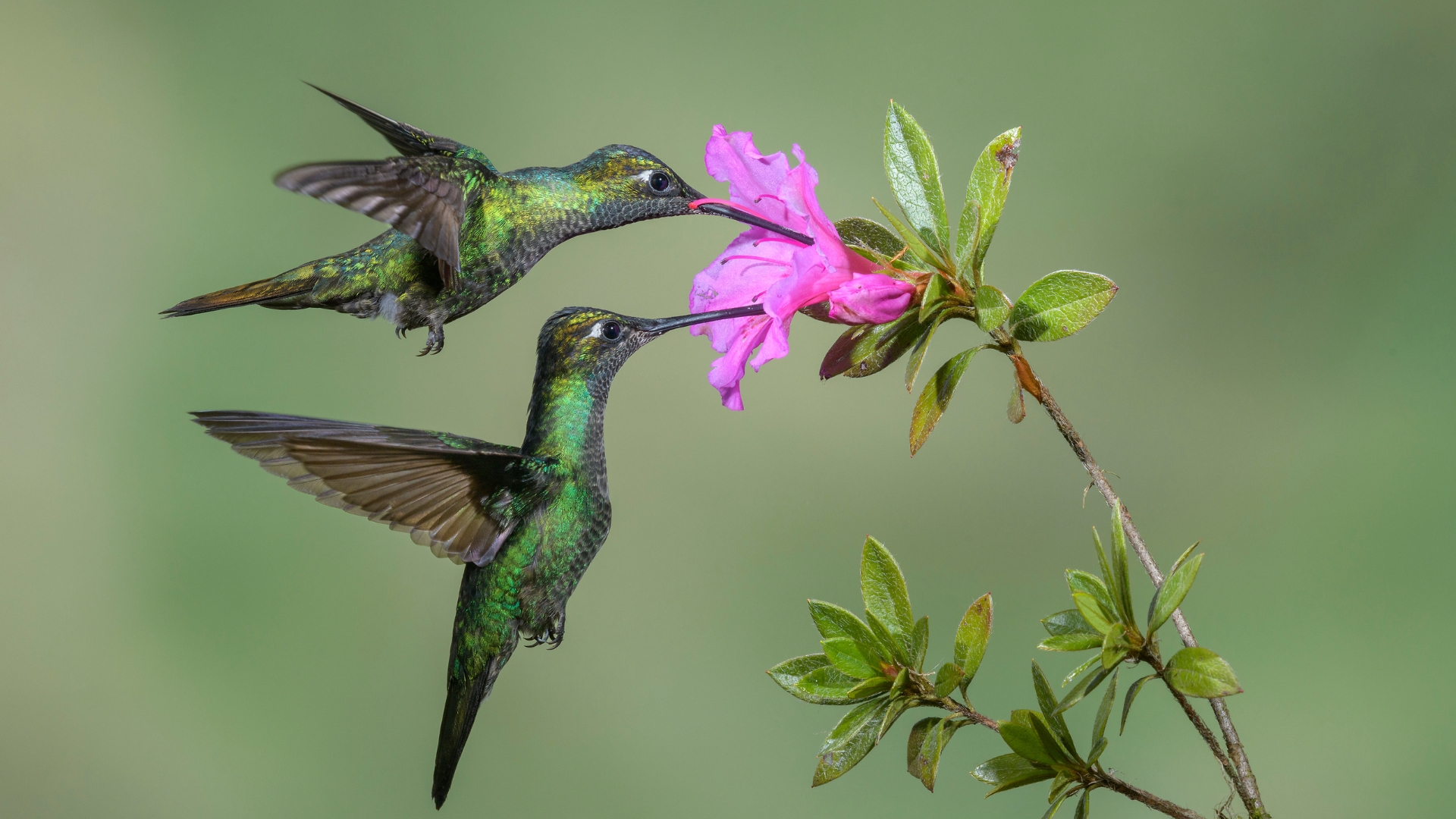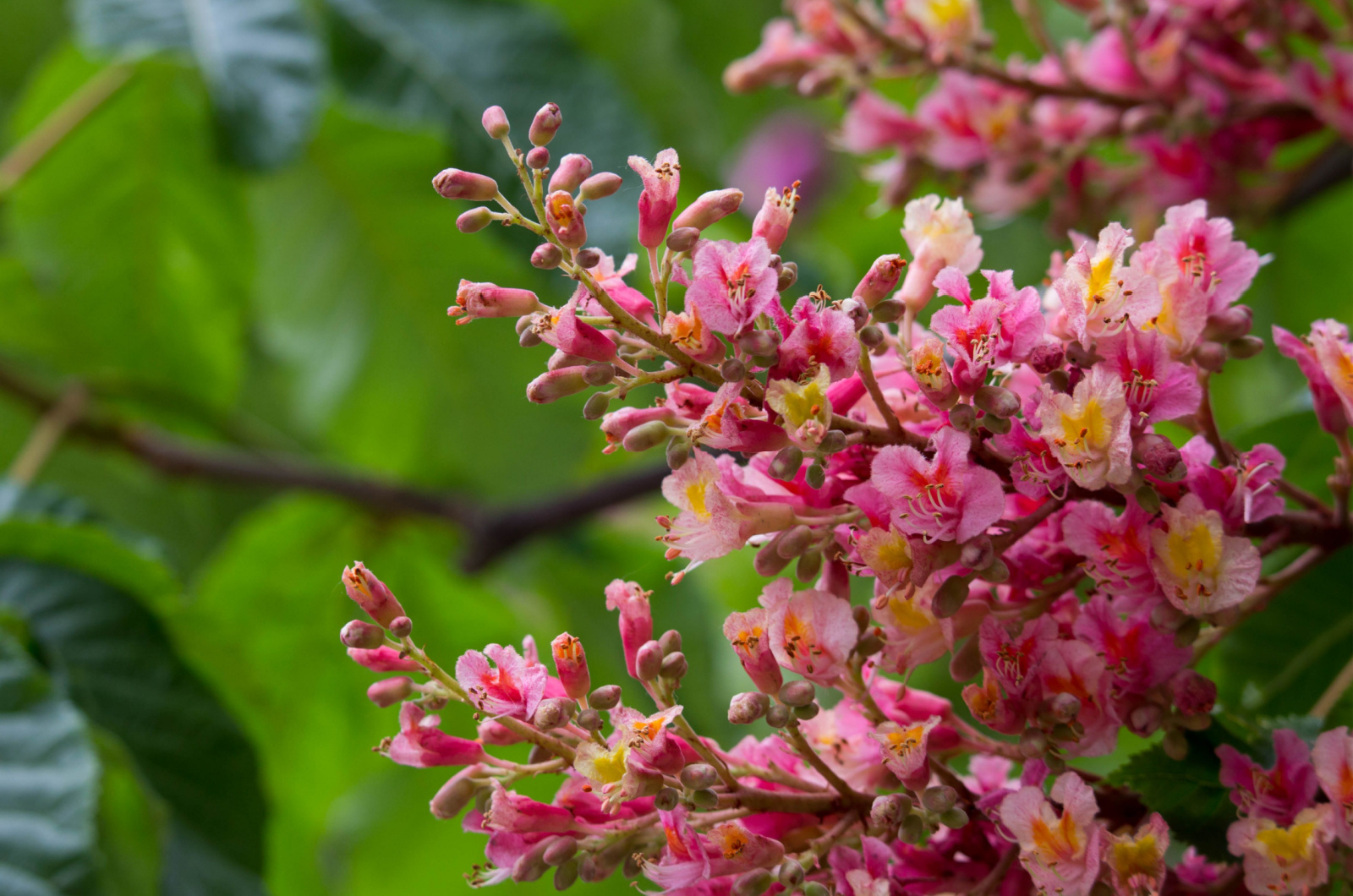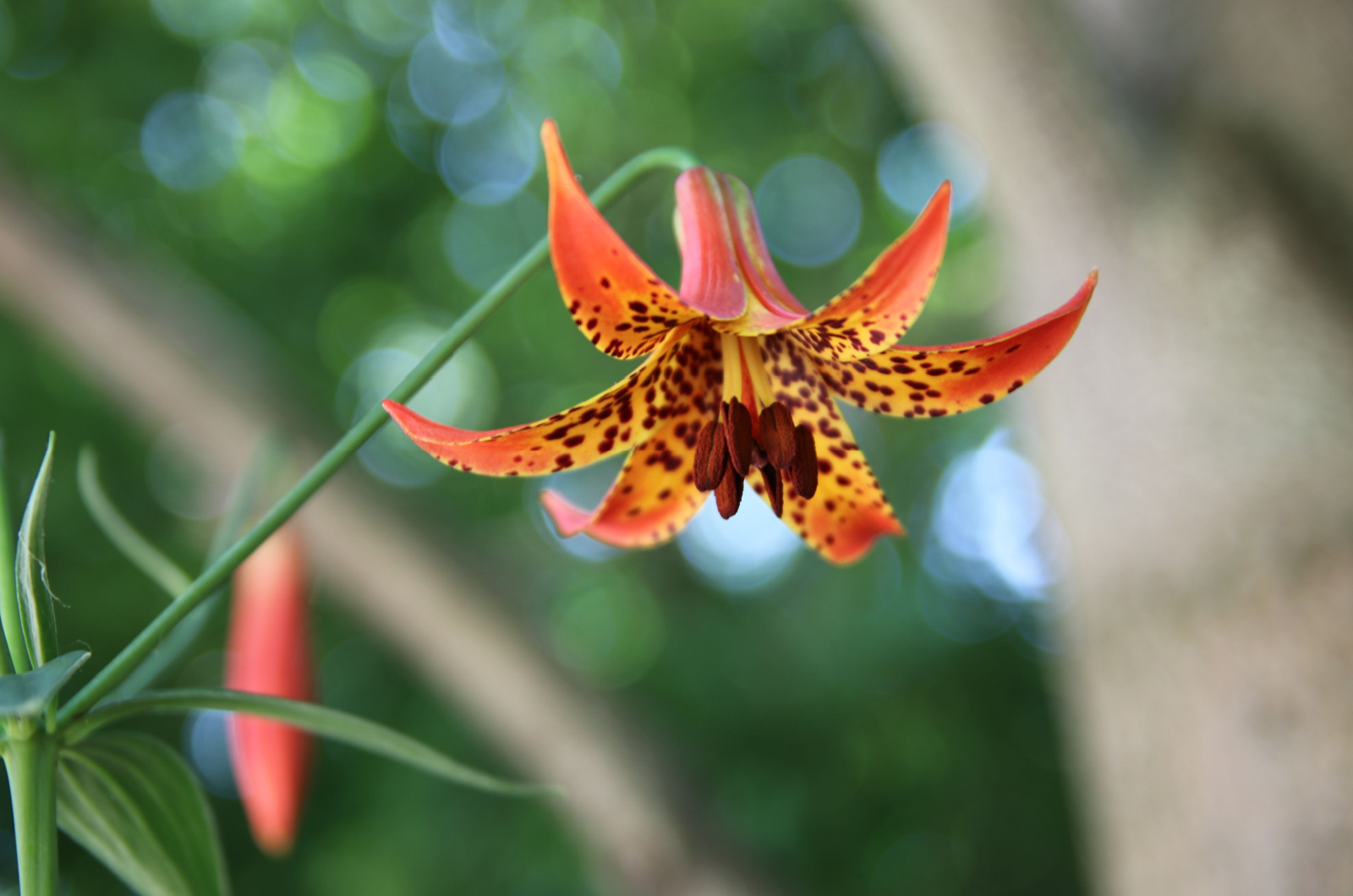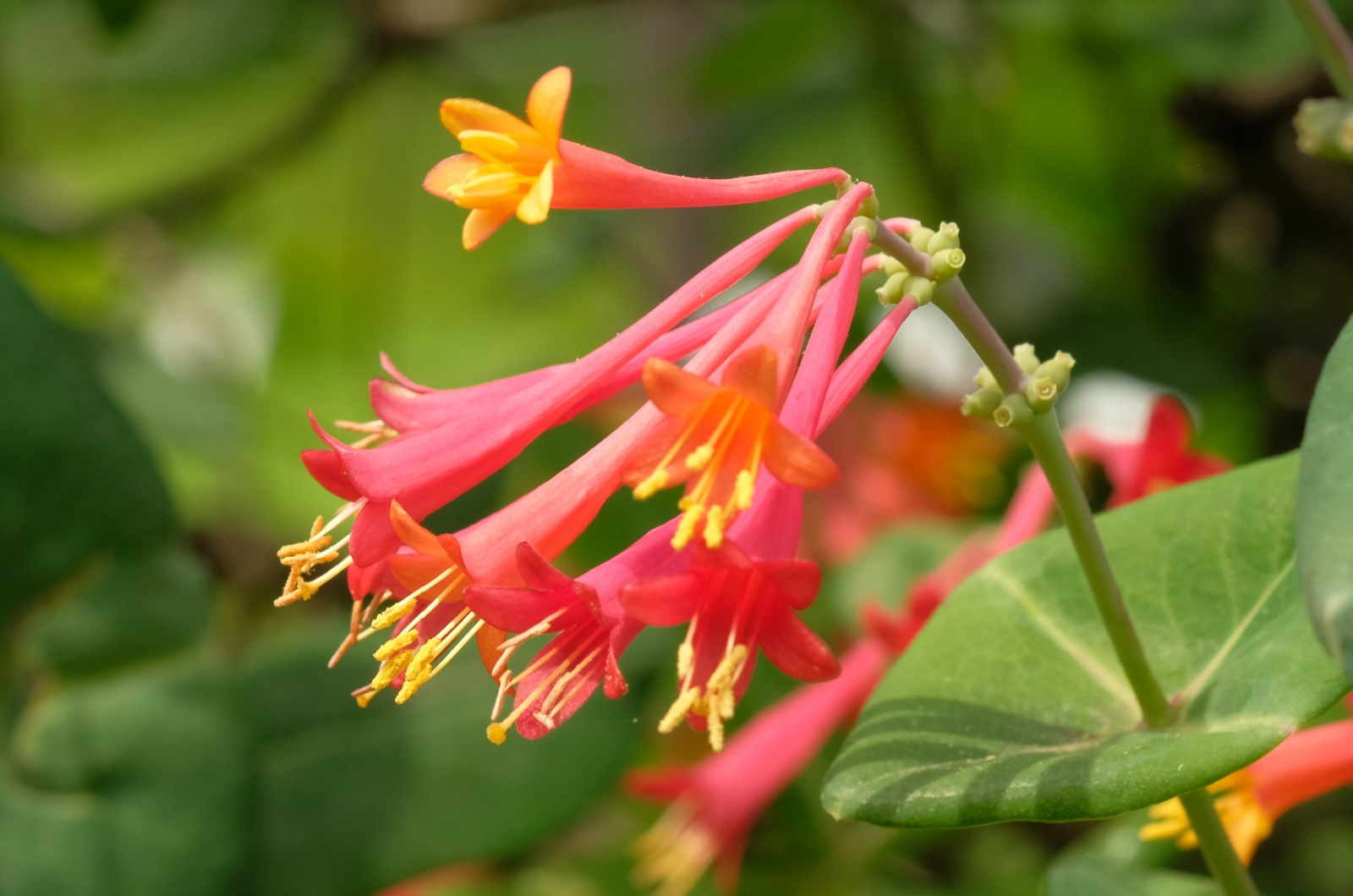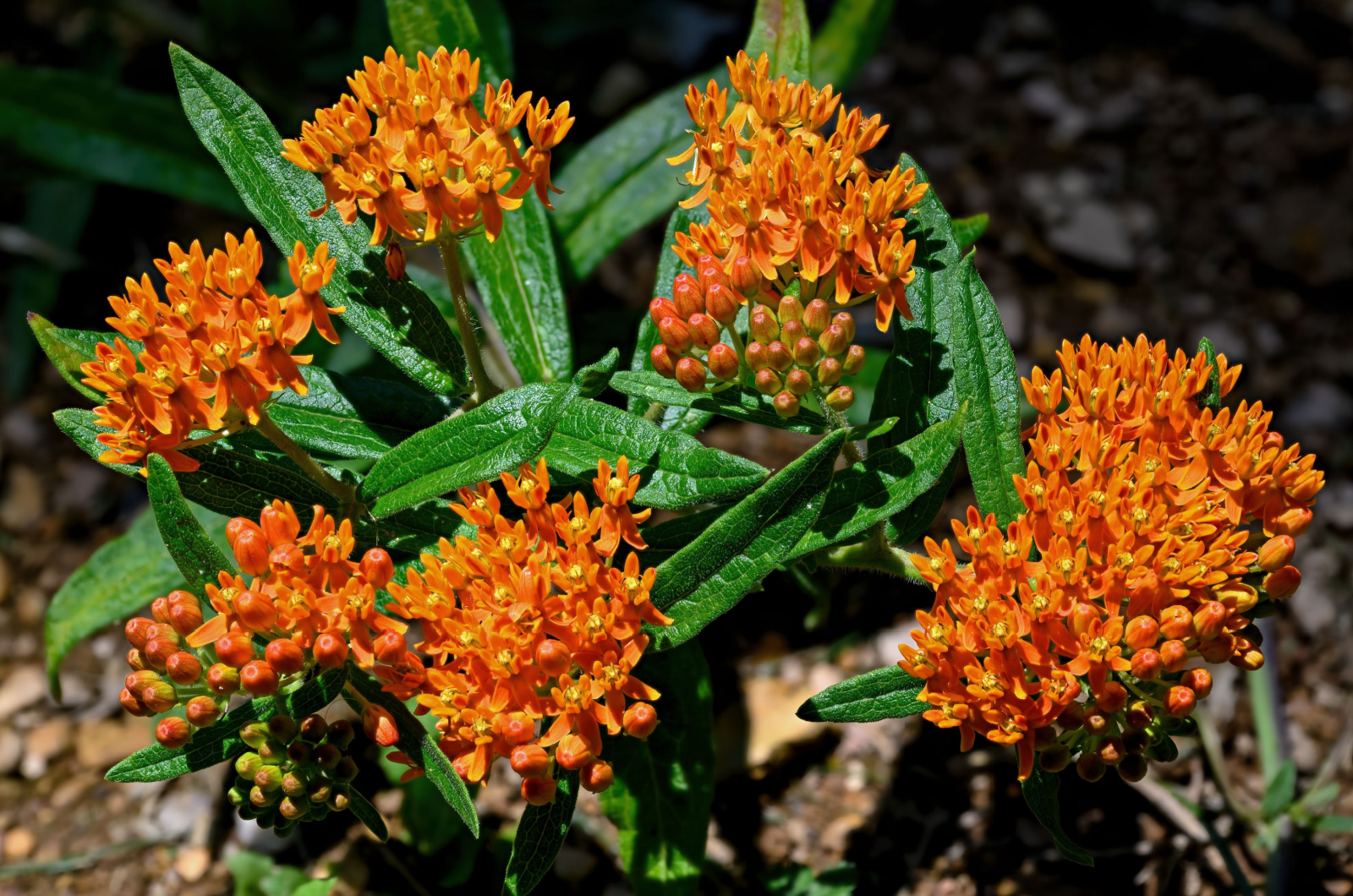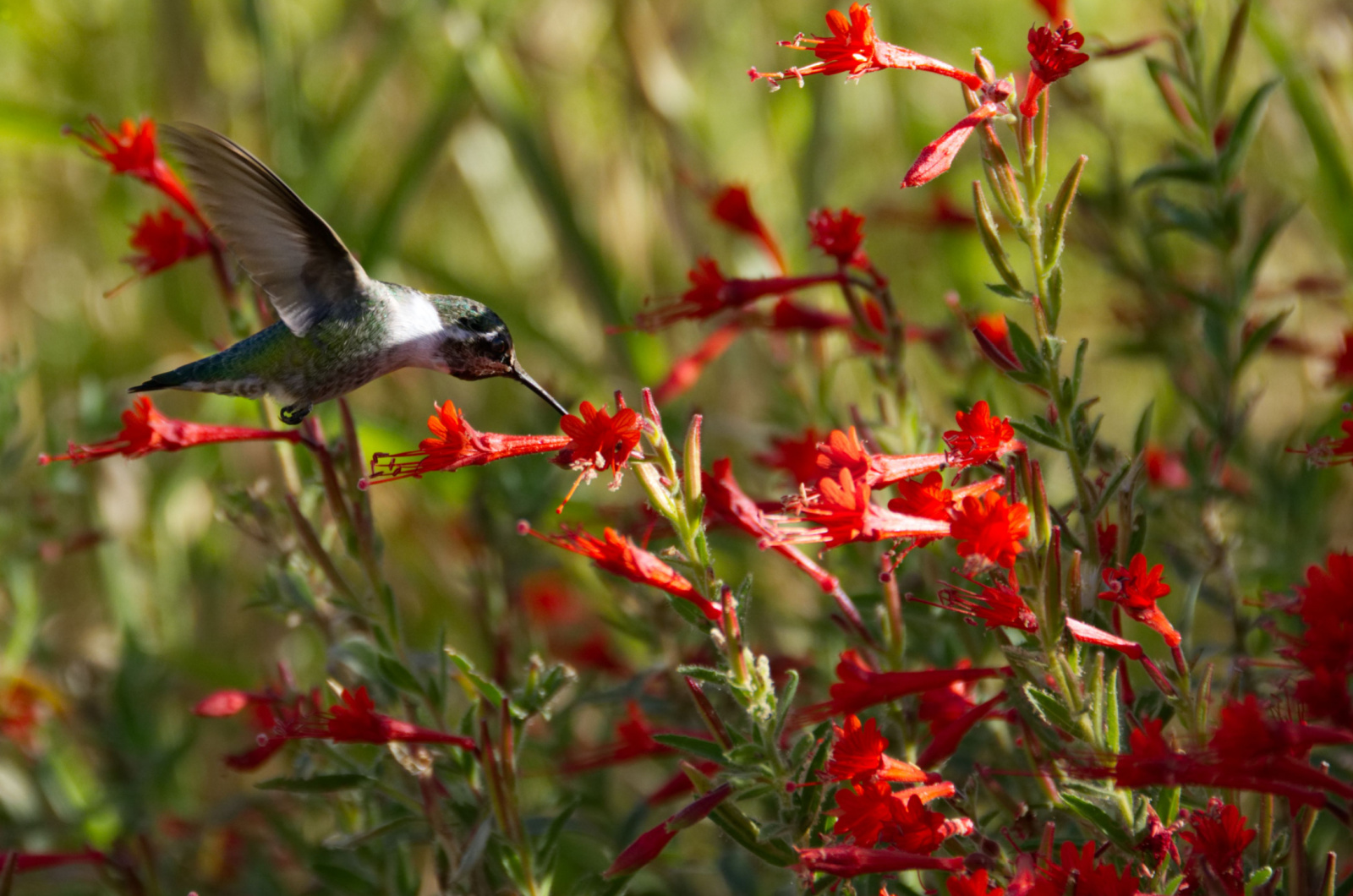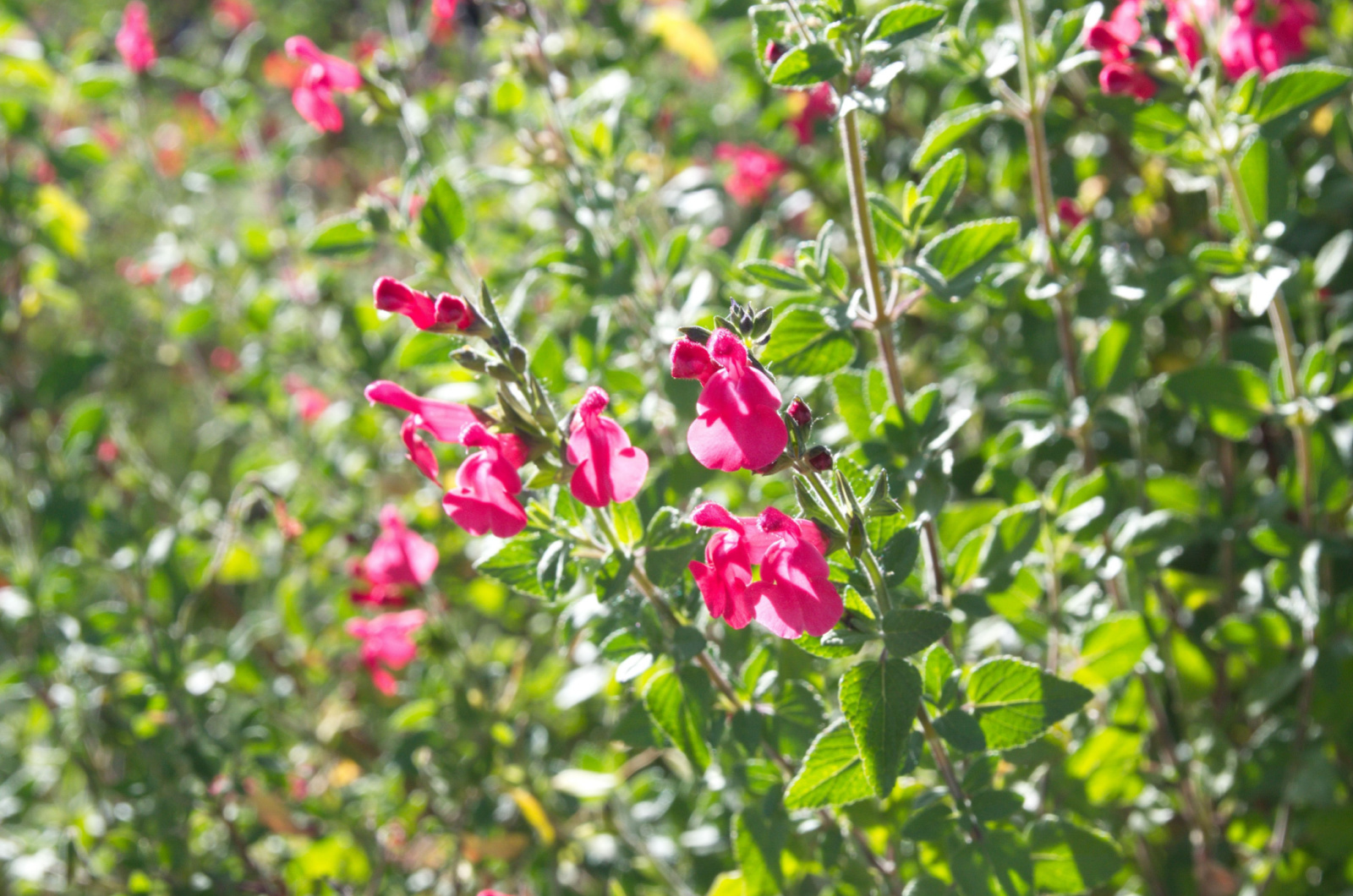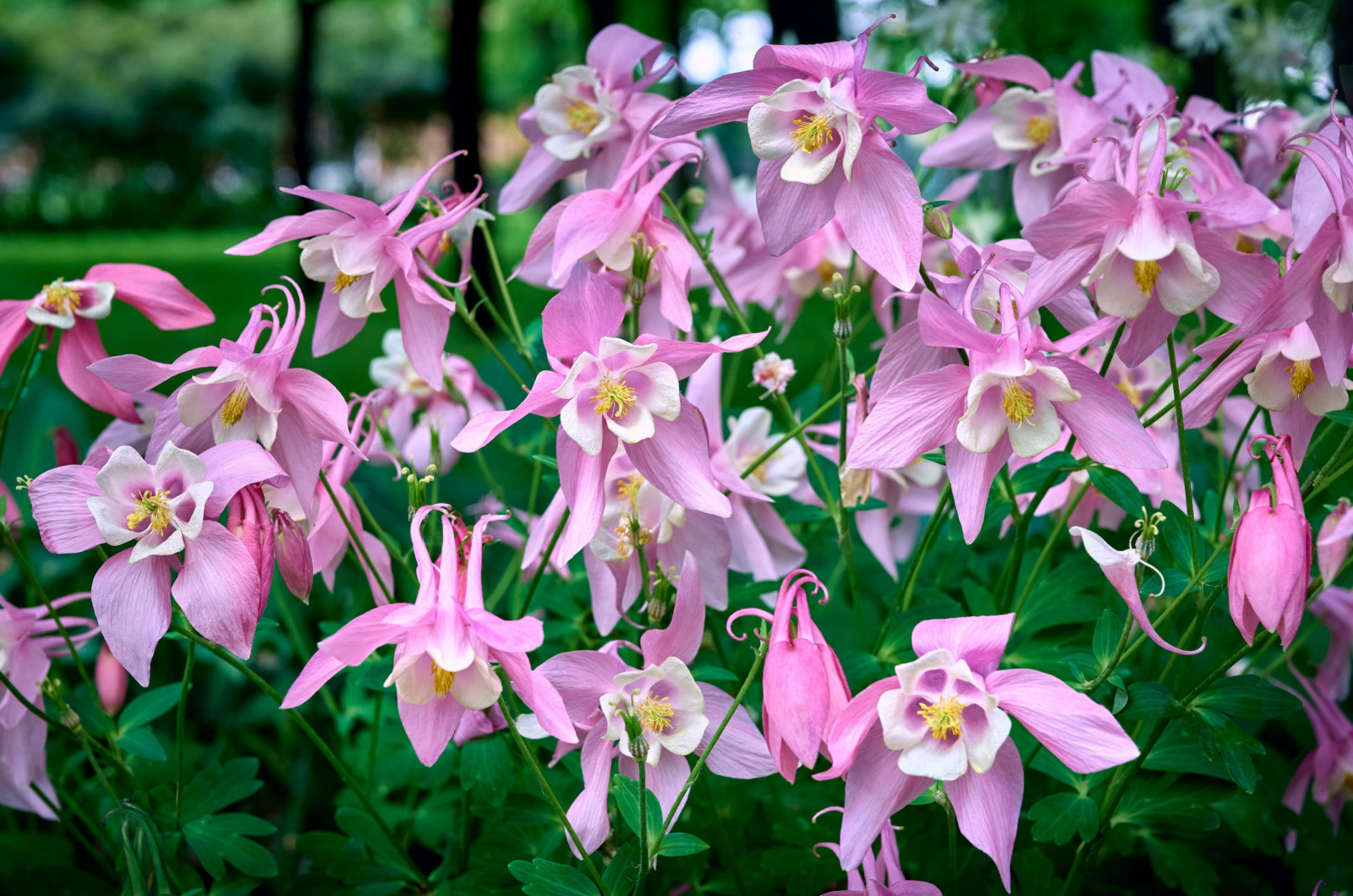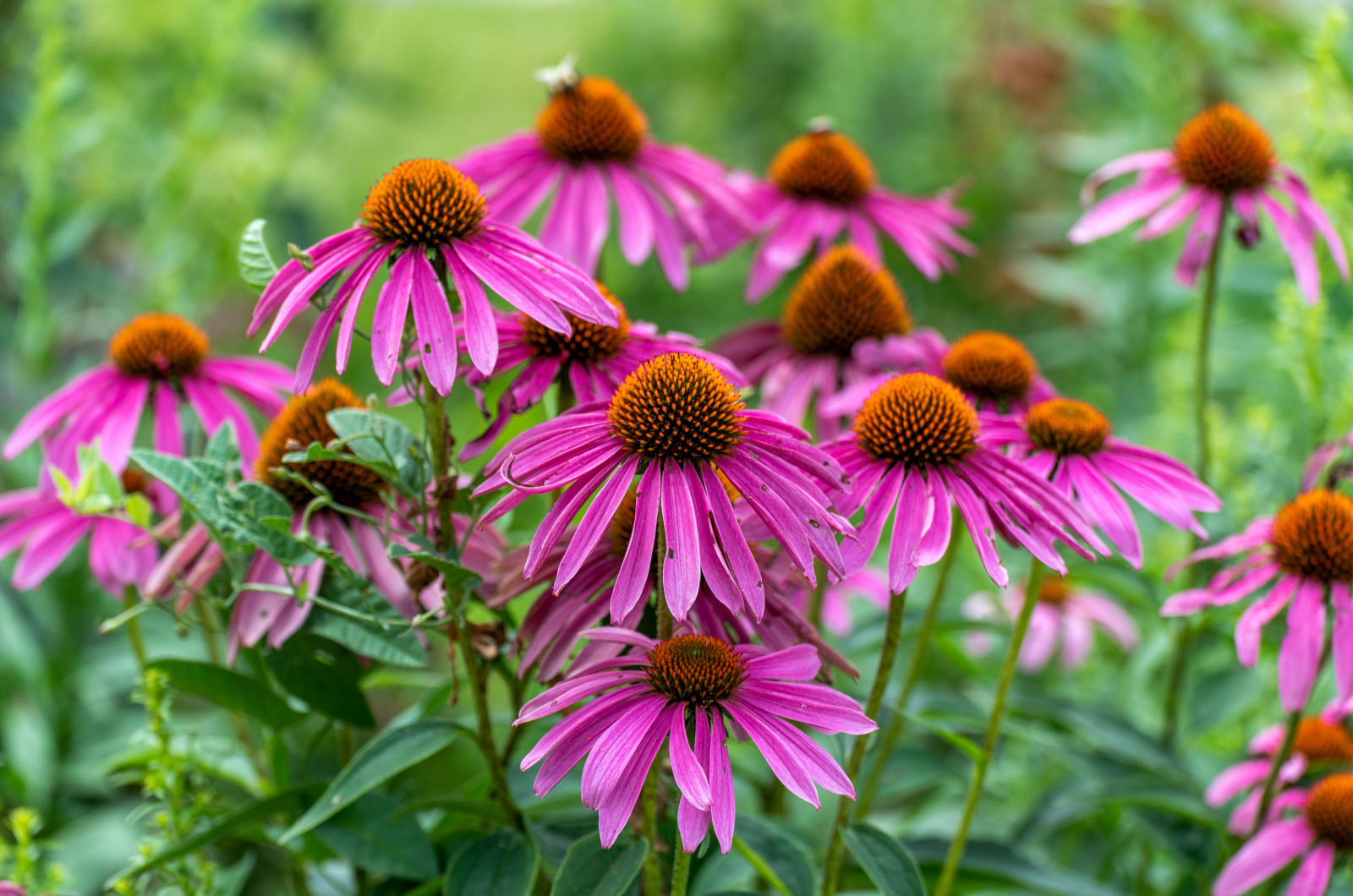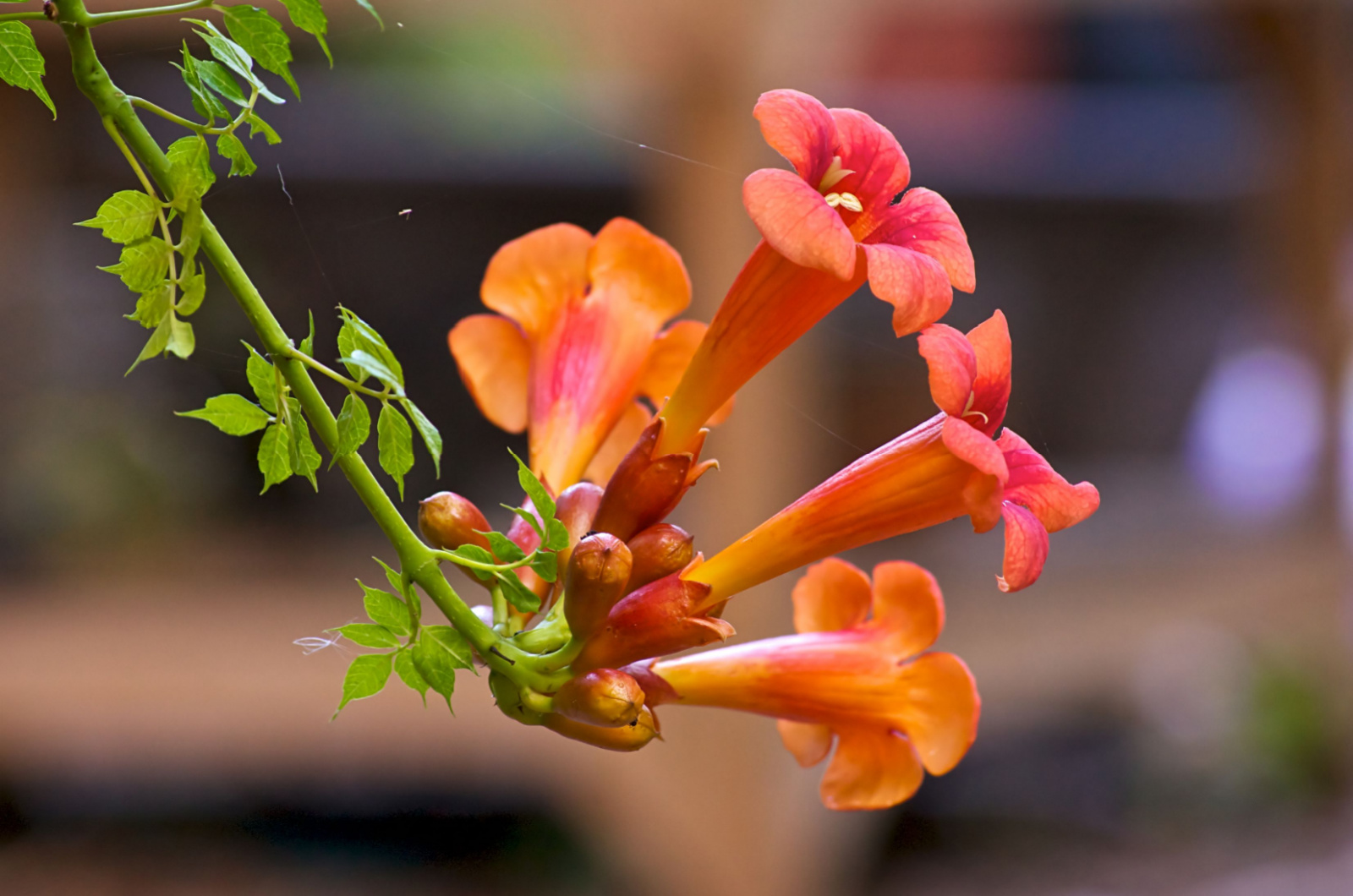When migrating, hummingbirds need to fuel their bodies with a lot of nutrients. A good food source for hummingbirds are nectar-rich native plants. These special plants are native to your area and have sweet nectar that attracts hummingbirds.
Picture your garden as a hummingbird paradise, where these tiny birds flutter around, enjoying the tasty nectar from the blooms!
Keep reading and learn about these easy-to-care-for plants that not only add beauty but also help these delightful birds thrive.
Get ready to create a hummingbird-friendly haven right in your own backyard!
Southeastern Native Plants For Hummingbirds
In the Southeast, you commonly observe Ruby-throated hummingbirds. Occasionally, during winter, you might catch a glimpse of Black-chinned or Rufous hummingbirds as well.
Here, native plants can take the heat and serve as a good food source for hummingbirds.
Red Buckeye
Scientific name: Aesculus pavia
USDA zones: 4 through 8
Standing tall with vibrant red blooms, the Red buckeye is like a beacon for hummingbirds. This native plant can be grown as a large shrub or small tree, adorning your garden with beautiful tubular flowers that act as a hummingbird magnet.
Although it can adapt to full sun and partial shade, it’s better to provide it with some shade in areas with extreme heat.
If you like to see red in your garden, here’s a list of gorgeous red flowers for every season.
Indian Pink
Scientific name: Spigelia marilandica
USDA zones: 5 through 9
Indian pink boasts red- and yellow-throated tubular flowers that create a wonderful flower display from late spring to summer. Put it in the shade, and watch hummingbirds come for nectar, bringing color and life to your garden.
Spotted Bee Balm
Scientific name: Monarda punctata
USDA zones: 3 through 9
A favorite among both gardeners and hummingbirds, the Spotted bee balm is a showstopper with its spotted blooms in shades of pink and purple. This native plant can tolerate both full sun and dry spells, which makes it an excellent choice for warm climates.
Canada Lily
Scientific name: Lilium canadense
USDA zones: 3 through 7
Canada lily is a showy perennial plant that grows up to 8 feet tall. You can hardly miss it as it grows tall and has about 20 colorful blooms on just one plant. Plant it in well-drained soil, and let the hummingbirds revel in the sweet nectar that these blooms offer.
Others: 11 Purple Flowers That Will Attract Hummingbirds To Your Garden
Northeastern Native Plants For Hummingbirds
Ruby-throated hummingbirds are only found to the east of the Mississippi River.
You can encourage them by planting these native plants filled with delicious nectar!
Trumpet Honeysuckle
Scientific name: Lonicera sempervirens
USDA zones: 4 through 9
This unaggressive climbing plant is an excellent choice for attracting hummingbirds. Red colors on the outside and vibrant yellow on the inside of the flowers make this plant special and stunning.
Place it in a sunny spot, and let the sweet nectar-filled blooms entice hummingbirds to dance around your garden!
This might be useful: A Complete Guide To Growing Climbing Honeysuckle Vines
Eastern Red Columbine
Scientific name: Aquilegia canadensis
USDA zones: 3 through 8
The Eastern Red columbine is another popular woodland wildflower that produces red and yellow bell-shaped flowers that are a favorite among hummingbirds. These peak in spring just in time for the arrival of the hummingbirds!
Jewelweed
Scientific name: Impatiens capensis
USDA zones: 2 through 11
The name says it all – Jewelweed is truly a jewel in the eyes of hummingbirds!
With its vibrant orange or yellow blooms, this native plant provides a dazzling display that hummingbirds find irresistible. This midsummer to fall bloomer should be planted in moist, shady areas.
Butterfly Weed
Scientific name: Asclepias tuberosa
USDA zones: 3 through 10
You can find Butterfly weed in every butterfly garden out there. This is a popular native plant that not only attracts butterflies but also hummingbirds thanks to its orange star-shaped flowers. Plant it in well-drained soil, and enjoy the burst of color it brings to your garden
Related: 25 Flowers That Attract Hummingbirds And Butterflies
Southwestern Native Plants For Hummingbirds
Costa’s hummingbirds reside in the Sonoran and Mojave deserts located in Arizona and California. Black-chinned, rufous, and Anna’s are more common in the drier regions.
California Fuchsia
Scientific name: Epilobium canum
USDA zones: 8 through 10
The California fuchsia is also called the hummingbird trumpet. It is a shrubby plant that produces bright red-orange tubular flowers. Planted in sunny spots, this drought-tolerant native plant makes your garden more vibrant and lively!
Ocotillo
Scientific name: Fouquieria splendens
USDA zones: 7 through 10
With its spiky branches adorned by red tubular flowers, this native plant provides a unique visual appeal while offering delicious nectar for hummingbirds. These plants are an important food source for migrating hummingbirds.
Autumn Sage
Scientific name: Salvia greggii
USDA zones: 6 through 9
As its name suggests, Autumn sage offers a burst of color in late summer and fall. Hummingbirds are drawn to its trumpet-shaped flowers with red, pink, or coral colors. This small shrub does well with full sun and moderate watering.
Beard-Lip Penstemon
Scientific name: Penstemon barbatus
USDA zones: 4 through 8
The Beard-lip penstemon thrives in sunny spots, growing tall and producing tubular flowers that hummingbirds love. This native plant begins blooming in early summer.
Related: 9 Native Wildflowers To Sow In October For A Colorful Spring And Summer
Western Native Plants For Hummingbirds
You’ll mostly find rufouses and calliopses in Northwestern areas. When going south, broad-tailed and Allen’s hummingbirds are mostly spotted.
Black-chinned hummingbirds are adaptable and can be found in various locations, while Anna’s hummingbirds are permanent residents along the Pacific coast throughout the year.
Western Columbine
Scientific name: Aquilegia formosa
USDA zones: 3 through 9
Hummingbirds never miss a chance to eat these nodding flowers with vibrant red seplans and bright yellow petal blades. They’re native plants that are great for a pop of color in beds or borders from late May through August.
Fireweed
Scientific name: Chamerion angustifolium
USDA zones: 2 through 7
Fireweed is a showy and tall wildflower that looks amazing in woodland, meadows, and rock and cottage gardens. Fireweed thrives in moist soil and full sun. You’ll notice purple-pink flowers in early summer that hummingbirds absolutely adore.
Scarlet Bugler
Scientific name: Penstemon centranthifolius
USDA zones: 8 through 10
Scarlet bugler is a popular perennial ideal for waterwise gardens and neutralized areas. These lovely natives will attract bees, butterflies, and hummingbirds to your garden. They can even survive cold winters if grown in the right zones!
Golden Currant
Scientific name: Ribes aureum
USDA zones: 3 through 8
If you like cloves and the color yellow, then you’re definitely going to love Golden currant! This native has prominent yellow flowers with clove-like fragrances that grow in early spring. It’s mostly used in hedges or borders as it grows quite tall.
Related: 22 Native Plants That Flourish In Shade
Midwestern Native Plants For Hummingbirds
The Ruby-throated hummingbird is the only type you’ll find here. These hummingbirds frequent parks, gardens, suburban backyards, forest edges, and meadows in the region.
Tall Larkspur
Scientific name: Delpinium exaltatum
USDA zones: 4 through 7
Tall larkspur shows off beautiful blue-purple flowers from July to September. Cottage gardens and woodlands look amazing with this native plant.To help it thrive, plant it in a sunny spot with soil that drains well and has plenty of nutrients.
Purple Coneflower
Scientific name: Echinacea purpurea
USDA zones: 3 through 8
The Purple coneflower is a long-blooming plant that produces lovely pinkish-purple flowers from early summer through the fall. This native gem, with its daisy-like blooms and prominent cones, is a favorite among hummingbirds.
This self-seeding plant is also drought-tolerant and resistant to deer. Plant it in full sun and enjoy a wonderful flower display along with hummingbirds flying around the garden.
Cardinal Flower
Scientific name: Lobelia cardinalis
USDA zones: 3 through 9
The Cardinal flower is known for its spike-like clusters of tubular flowers that allure hummingbirds. This native is used to moist soil, so it will fit perfectly in a rain garden or next to a water feature.
Trumpet Vine
Scientific name: Campsis radicans
USDA zones: 4 through 10
This native is a high-climber that produces orange-red flowers throughout summer. It can reach up to 35 feet tall, which makes it perfect for a fence or pergola. In the Southeast area, Trumpet vine can be invasive, so be careful!
Related: Do Hummingbirds Like Hibiscus: The Definitive Answer

